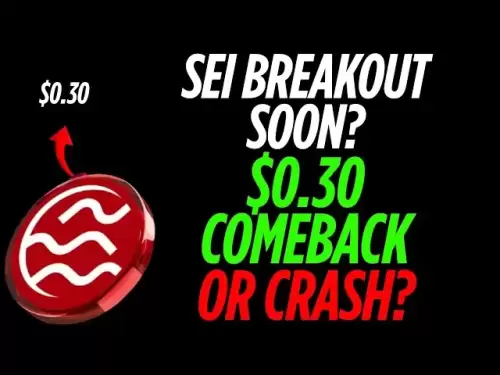-
 Bitcoin
Bitcoin $109,583.2239
0.19% -
 Ethereum
Ethereum $2,583.4612
0.48% -
 Tether USDt
Tether USDt $1.0003
-0.04% -
 XRP
XRP $2.2681
0.70% -
 BNB
BNB $659.9218
-0.52% -
 Solana
Solana $151.4961
-0.37% -
 USDC
USDC $0.9999
-0.02% -
 TRON
TRON $0.2861
1.20% -
 Dogecoin
Dogecoin $0.1718
0.04% -
 Cardano
Cardano $0.5960
-0.07% -
 Hyperliquid
Hyperliquid $40.1233
2.85% -
 Sui
Sui $2.9974
2.48% -
 Bitcoin Cash
Bitcoin Cash $497.1279
-1.76% -
 Chainlink
Chainlink $13.7275
-0.22% -
 UNUS SED LEO
UNUS SED LEO $9.0241
0.70% -
 Avalanche
Avalanche $18.5536
-0.88% -
 Stellar
Stellar $0.2421
1.39% -
 Toncoin
Toncoin $2.8593
-0.51% -
 Shiba Inu
Shiba Inu $0.0...01187
-0.07% -
 Litecoin
Litecoin $90.0023
2.90% -
 Hedera
Hedera $0.1590
2.79% -
 Monero
Monero $322.1495
0.00% -
 Polkadot
Polkadot $3.5453
-1.00% -
 Dai
Dai $1.0000
-0.01% -
 Bitget Token
Bitget Token $4.5733
-1.06% -
 Ethena USDe
Ethena USDe $1.0002
-0.01% -
 Uniswap
Uniswap $7.6345
3.03% -
 Aave
Aave $279.2583
0.47% -
 Pepe
Pepe $0.0...01003
-1.52% -
 Pi
Pi $0.4941
-0.32%
What is a token standard (e.g., ERC-20, ERC-721)?
Token standards like ERC-20 and ERC-721 define rules for fungible and non-fungible tokens on blockchain, ensuring interoperability and simplifying development across wallets, exchanges, and dApps.
Jul 04, 2025 at 01:35 am
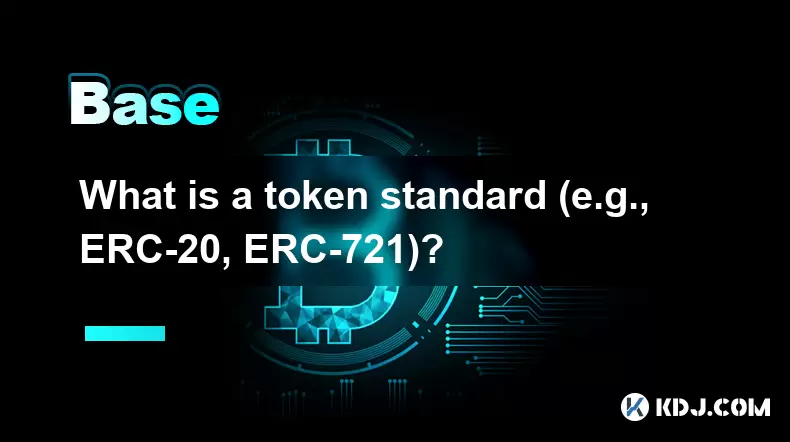
What Defines a Token Standard in Blockchain?
In the blockchain ecosystem, a token standard refers to a set of rules and protocols that define how tokens function within a specific network. These standards ensure interoperability between different applications, wallets, and exchanges by establishing uniform behaviors for token creation and management. For instance, ERC-20 is one of the most widely adopted token standards on the Ethereum blockchain. It provides a template for fungible tokens, meaning each token is identical and interchangeable with another of the same type.
The importance of token standards lies in their ability to streamline development and integration processes. Developers can rely on established frameworks rather than building from scratch, which accelerates deployment and reduces errors. This consistency also allows wallets and decentralized applications (dApps) to support multiple tokens without requiring custom code for each one.
How Does ERC-20 Work?
The ERC-20 standard outlines a series of functions and events that smart contracts must implement to be considered compliant. These include functionalities like transferring tokens between addresses, querying account balances, and approving token transfers on behalf of another address. The standardization ensures that any wallet or service interacting with an ERC-20 token knows exactly what functions to call and how they should behave.
To deploy an ERC-20 token, developers write a smart contract using Solidity, the primary programming language for Ethereum. They must incorporate all mandatory functions such as totalSupply(), balanceOf(address _owner), transfer(address _to, uint256 _value), transferFrom(address _from, address _to, uint256 _value), approve(address _spender, uint256 _value), and allowance(address _owner, address _spender). Each of these functions plays a crucial role in enabling seamless transactions and interactions across the network.
Additionally, events such as Transfer and Approval are emitted during relevant actions, allowing external systems to track changes and updates in real-time. These events help maintain transparency and enable third-party services like block explorers to display transaction data accurately.
Understanding Non-Fungible Tokens with ERC-721
While ERC-20 governs fungible tokens, ERC-721 introduces the concept of non-fungible tokens (NFTs), where each token is unique and not interchangeable on a one-to-one basis. This standard has revolutionized digital ownership by enabling the representation of unique assets such as digital art, collectibles, and virtual real estate on the blockchain.
The ERC-721 standard defines functions like balanceOf(address _owner), ownerOf(uint256 _tokenId), transferFrom(address _from, address _to, uint256 _tokenId), and approve(address _approved, uint256 _tokenId). Unlike ERC-20, which deals with quantities of tokens, ERC-721 focuses on individual token IDs, ensuring each asset maintains its distinct properties.
One of the key features of ERC-721 is the ability to mint unique tokens with metadata that describes their attributes. This metadata often includes information about the asset's name, description, image URL, and other customizable traits. Platforms like OpenSea leverage this metadata to display NFTs visually and allow users to interact with them seamlessly.
Key Differences Between ERC-20 and ERC-721
Although both ERC-20 and ERC-721 operate on the Ethereum blockchain, their fundamental differences lie in the nature of the tokens they represent. ERC-20 is designed for fungible tokens, where each unit is indistinguishable from another. In contrast, ERC-721 enables the creation of non-fungible tokens, each carrying unique characteristics and values.
Another distinction appears in their transfer mechanisms. ERC-20 allows for batch transfers of identical tokens, while ERC-721 requires individual transfers for each unique token. Additionally, ERC-721 includes a tokenURI function that links to off-chain metadata, providing richer descriptions of the token's attributes.
Developers must consider these differences when choosing a standard for their project. Applications requiring divisible and interchangeable units benefit from ERC-20, whereas those involving unique digital assets lean towards ERC-721. Understanding these nuances helps ensure compatibility with existing tools and platforms while meeting the specific needs of the application.
Other Notable Token Standards
Beyond ERC-20 and ERC-721, several other token standards have emerged to address specialized use cases. ERC-1155, for example, combines aspects of both fungible and non-fungible tokens within a single contract. This hybrid approach allows for more efficient management of multiple token types, reducing gas costs and improving scalability.
Another emerging standard is ERC-3525, which introduces semi-fungible tokens. These tokens can transition between fungible and non-fungible states based on predefined conditions, offering greater flexibility in financial instruments and dynamic asset management.
Each new standard builds upon previous innovations, expanding the possibilities for developers and users alike. By adopting these standards, projects can enhance functionality, improve user experiences, and foster broader adoption across the blockchain ecosystem.
Frequently Asked Questions
Q: Can I convert an ERC-20 token into an ERC-721 token?
A: Direct conversion isn't possible since they serve different purposes. However, you could design a system where ERC-20 tokens are used to mint ERC-721 tokens through a smart contract mechanism.
Q: Are there alternatives to ERC-20 and ERC-721 on other blockchains?
A: Yes, many blockchains have their own token standards. For example, Binance Smart Chain uses BEP-20 and BEP-721, which are functionally similar to their Ethereum counterparts.
Q: How do token standards affect transaction fees?
A: Standards themselves don't directly influence fees. However, complex standards like ERC-721 may require more computational resources, potentially increasing gas costs compared to simpler standards like ERC-20.
Q: Is it possible to create a token that doesn't follow any standard?
A: Technically yes, but doing so would limit compatibility with wallets, exchanges, and dApps, making adoption significantly harder due to lack of recognition and support.
Disclaimer:info@kdj.com
The information provided is not trading advice. kdj.com does not assume any responsibility for any investments made based on the information provided in this article. Cryptocurrencies are highly volatile and it is highly recommended that you invest with caution after thorough research!
If you believe that the content used on this website infringes your copyright, please contact us immediately (info@kdj.com) and we will delete it promptly.
- BONK Price Prediction: Meme Coin Mania and What's Next?
- 2025-07-04 12:30:13
- NYAG, Stablecoins, and FDIC Protections: Navigating the Regulatory Maze
- 2025-07-04 13:10:15
- Level Up Your DeFi Game: Phantom Wallet and the Ultimate DeFi Experience
- 2025-07-04 13:10:15
- Bitcoin Surge: Breaking Down the $109,000 Barrier and the Road to $165,000?
- 2025-07-04 12:30:13
- Solana ETF Inflows & Snorter Token: A New Era for Meme Coin Trading?
- 2025-07-04 12:50:12
- Ripple, Stablecoin, and First Bank: Decoding the Latest Moves in Crypto
- 2025-07-04 12:50:12
Related knowledge

What is a token generation event (TGE)?
Jul 04,2025 at 07:14am
Understanding the Basics of a Token Generation Event (TGE)A Token Generation Event (TGE) refers to the process through which a blockchain project creates and distributes its native tokens to investors, participants, or stakeholders. This event is often associated with new cryptocurrency projects launching on platforms like Ethereum, Binance Smart Chain,...

What is a block explorer API?
Jul 04,2025 at 05:07am
Understanding the Role of a Block Explorer APIA block explorer API is a crucial interface that enables developers and users to interact programmatically with blockchain data. Unlike traditional APIs used in web services, a block explorer API specifically provides access to blockchain-related information such as transaction details, wallet balances, bloc...
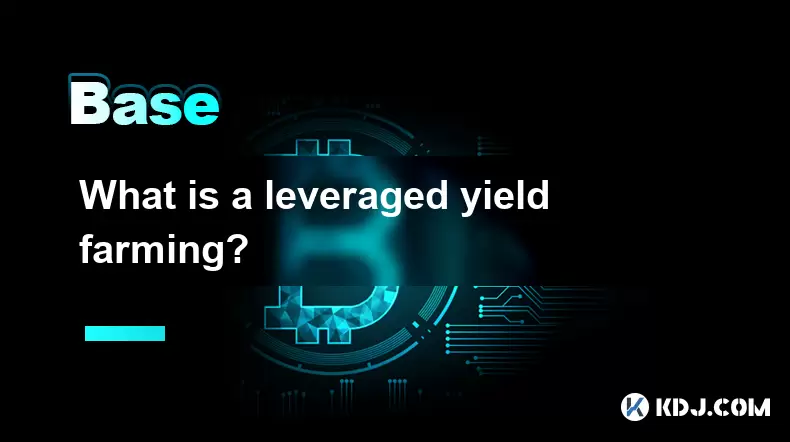
What is a leveraged yield farming?
Jul 04,2025 at 09:36am
Understanding Leveraged Yield FarmingLeveraged yield farming is a more advanced form of yield farming, which itself is a popular method in the decentralized finance (DeFi) ecosystem to earn returns by providing liquidity to various protocols. In traditional yield farming, users deposit tokens into a DeFi platform and earn rewards in return, often in the...

What is open interest in derivatives?
Jul 03,2025 at 02:49pm
Understanding Open Interest in DerivativesOpen interest is a critical metric used in the cryptocurrency derivatives market, particularly when analyzing futures and options contracts. It represents the total number of outstanding contracts that have not been settled or closed by either party involved. Unlike trading volume, which counts all trades made i...
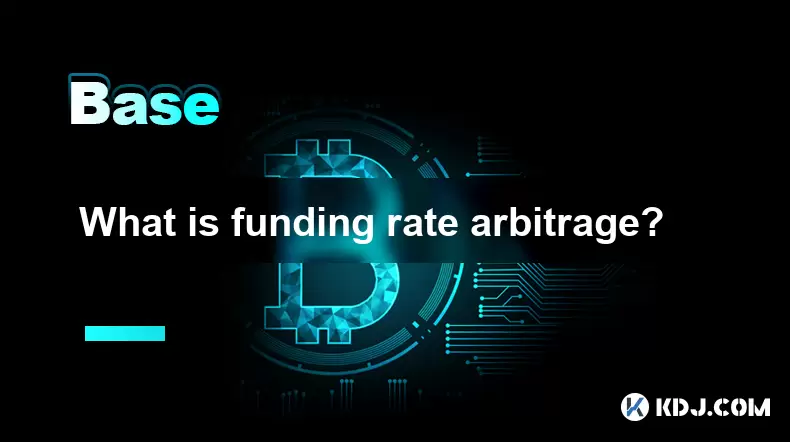
What is funding rate arbitrage?
Jul 04,2025 at 11:43am
Understanding Funding Rate Arbitrage in the Cryptocurrency MarketFunding rate arbitrage is a trading strategy employed by crypto traders to exploit differences in funding rates across various perpetual futures exchanges. In perpetual contracts, funding rates are periodic payments made between long and short traders depending on whether the price of the ...
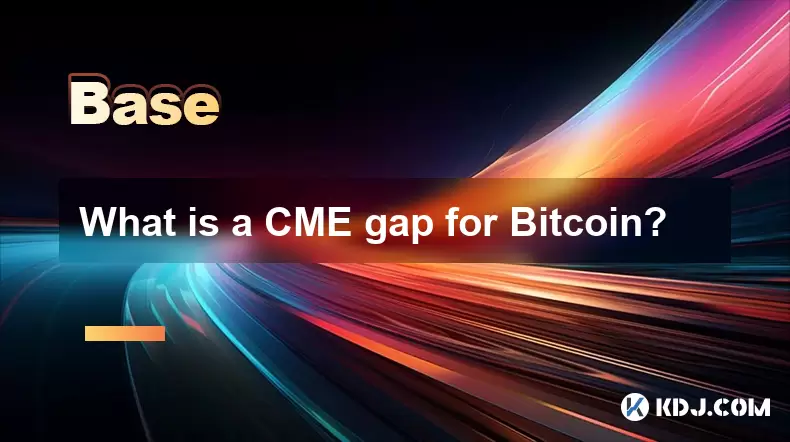
What is a CME gap for Bitcoin?
Jul 03,2025 at 05:49pm
Understanding the Concept of a CME GapA CME gap refers to a discrepancy in price between the closing price of Bitcoin on the Chicago Mercantile Exchange (CME) and its opening price when trading resumes. This phenomenon occurs because the CME operates during specific hours, typically aligned with traditional market hours, while cryptocurrency markets ope...

What is a token generation event (TGE)?
Jul 04,2025 at 07:14am
Understanding the Basics of a Token Generation Event (TGE)A Token Generation Event (TGE) refers to the process through which a blockchain project creates and distributes its native tokens to investors, participants, or stakeholders. This event is often associated with new cryptocurrency projects launching on platforms like Ethereum, Binance Smart Chain,...

What is a block explorer API?
Jul 04,2025 at 05:07am
Understanding the Role of a Block Explorer APIA block explorer API is a crucial interface that enables developers and users to interact programmatically with blockchain data. Unlike traditional APIs used in web services, a block explorer API specifically provides access to blockchain-related information such as transaction details, wallet balances, bloc...

What is a leveraged yield farming?
Jul 04,2025 at 09:36am
Understanding Leveraged Yield FarmingLeveraged yield farming is a more advanced form of yield farming, which itself is a popular method in the decentralized finance (DeFi) ecosystem to earn returns by providing liquidity to various protocols. In traditional yield farming, users deposit tokens into a DeFi platform and earn rewards in return, often in the...

What is open interest in derivatives?
Jul 03,2025 at 02:49pm
Understanding Open Interest in DerivativesOpen interest is a critical metric used in the cryptocurrency derivatives market, particularly when analyzing futures and options contracts. It represents the total number of outstanding contracts that have not been settled or closed by either party involved. Unlike trading volume, which counts all trades made i...

What is funding rate arbitrage?
Jul 04,2025 at 11:43am
Understanding Funding Rate Arbitrage in the Cryptocurrency MarketFunding rate arbitrage is a trading strategy employed by crypto traders to exploit differences in funding rates across various perpetual futures exchanges. In perpetual contracts, funding rates are periodic payments made between long and short traders depending on whether the price of the ...

What is a CME gap for Bitcoin?
Jul 03,2025 at 05:49pm
Understanding the Concept of a CME GapA CME gap refers to a discrepancy in price between the closing price of Bitcoin on the Chicago Mercantile Exchange (CME) and its opening price when trading resumes. This phenomenon occurs because the CME operates during specific hours, typically aligned with traditional market hours, while cryptocurrency markets ope...
See all articles























